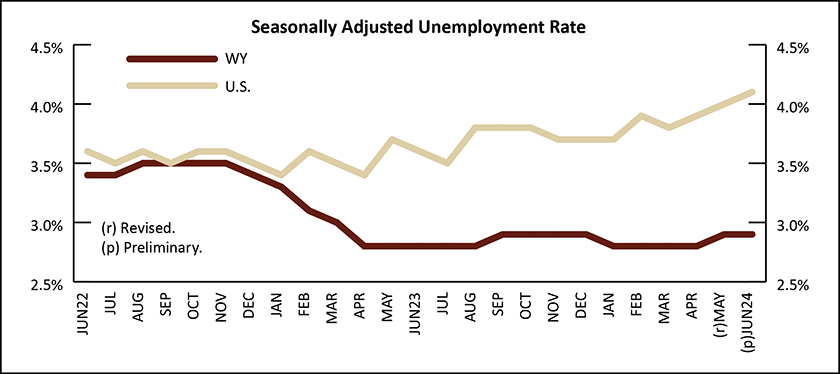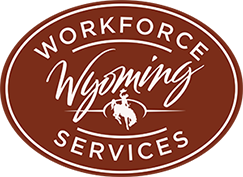Wyoming Labor Force Trends
August 2024 | Volume 61, No. 8
Click Here for PDF
Return to Table of Contents
Wyoming Unemployment Unchanged at 2.9% in June 2024
by: David Bullard, Senior Economist
The Research & Planning section of the Wyoming Department of Workforce Services reported that the state’s seasonally adjusted1 unemployment rate remained unchanged from May to June at 2.9%.
Wyoming’s unemployment rate was slightly higher than its June 2023 level of 2.8%, but much lower than the current U.S. unemployment rate of 4.1%.
From May to June, most county unemployment rates followed their normal seasonal pattern and increased slightly. Sometimes unemployment rates increase in June as young people get out of school and start looking for work. The largest increases occurred in Albany (up from 2.6% to 3.0%), Fremont (up from 3.0% to 3.3%), and Weston (up from 2.3% to 2.6%) counties. Teton County’s unemployment rate fell from 2.6% to 1.7% as the summer tourist season ramped up.
Most county unemployment rates increased slightly or remained unchanged from year-ago levels. The largest increases were seen in Big Horn (up from 2.9% to 3.4%), Weston (up from 2.1% to 2.6%), and Campbell (up from 2.6% to 3.0%) counties. Washakie County’s unemployment rate fell from 3.3% to 3.2%.
In June, the lowest unemployment rates were found in Teton County at 1.7%, Niobrara County at 2.1%, and Crook County at 2.3%. The highest rates were reported in Uinta County at 3.5%, Big Horn County at 3.4%, and Sweetwater County at 3.4%.
Current Employment Statistics (CES) estimates show that total nonfarm employment in Wyoming (not seasonally adjusted and measured by place of work) rose from 298,900 in June 2023 to 300,300 in June 2024, an increase of 1,400 jobs (0.5%).
R&P's most recent monthly news release is available at https://doe.state.wy.us/LMI/news.htm.



 Hire Wyo
Hire Wyo